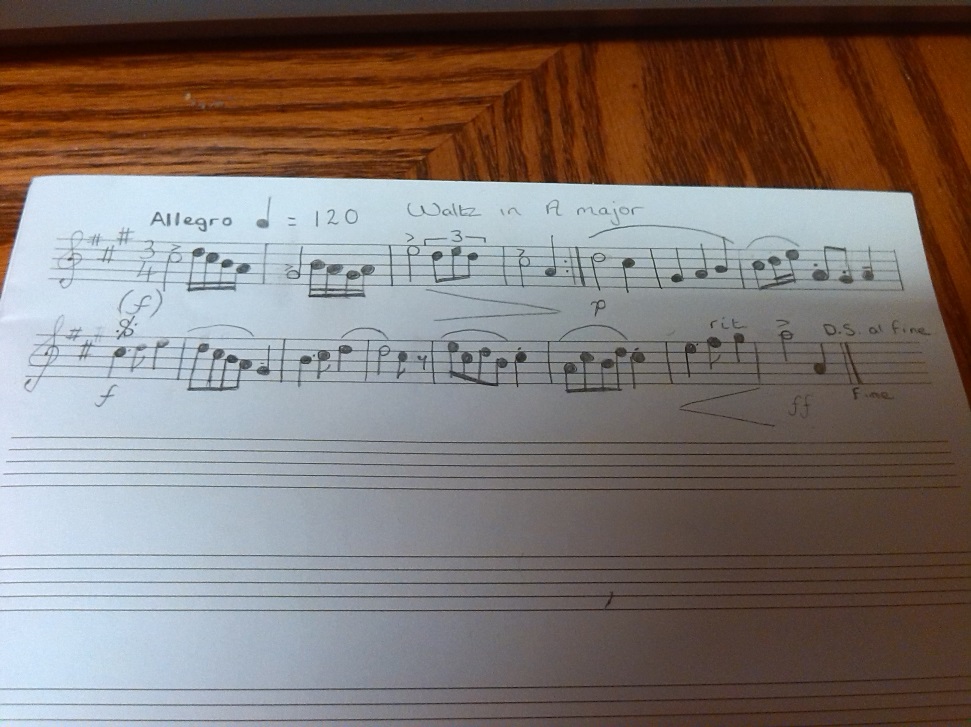Our Ballymena Today team are taking a look at how to write sheet music. Read this and then let us know how you get on.
Do you play music? Do you write music? It is a great thing to do in your spare time but lots of people don’t because either a) it takes too long, and they don’t have enough time, or b) they don’t know how. So, I decided to write a how-to article on how to write music. It takes a while, but I have included some pictures to help you! Here’s how…
1. Use sheet music.
2. It is advised to write in pencil. On the stave, draw your clef (left or right hand), key signature (sharps or flats, if any at all) and time signature (how many beats there are in the bar and what their value is). These are written from left to right, and in that order.
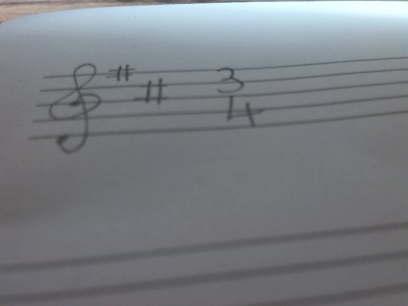
3. Draw in your notes and rests. I find it easiest to draw the notes as dots first, including the note value. Don’t worry if it looks a bit odd to begin with, but you will add the lines to them later. By only drawing the dots at the beginning, it means that if you make a mistake or error, you only have to rub out the small dot without rubbing out any other notes, or leaving any marks on the page. It also means that for now you are just focusing on the notes, and getting those bits right, and if you are trying to work out what the rhythms are at the same time as well, you are more likely to make a mistake.
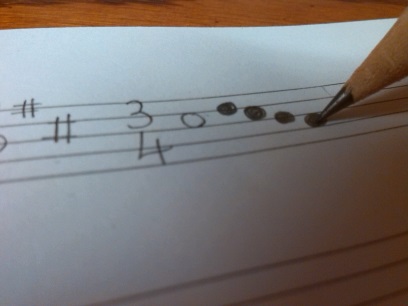
4. Make sure you add in your bar lines at the end of every measure in the correct places, e.g. after every 4 beats etc. Add in repeat signs that are needed and count your beats carefully. Draw a double-bar line at the very end to signify the end of the piece. It is important that when you take a new line, draw again the clef and the key signature on the left of the stave, but you don’t need to draw the time signature again.
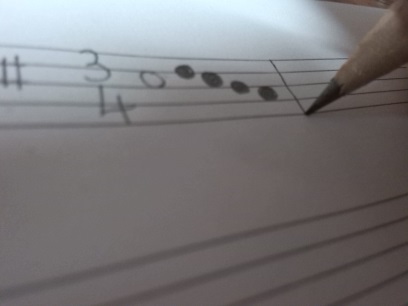
5. Now you can add on the straight lines to your ‘dots’ which are your notes. Make sure the lines are not too long or too short and they go in the right direction, up or down. Give an extra horizontal line or more if there are notes that needs it, e.g. a semiquaver, demisemiquaver etc.

6. If you want extra detail in your piece, decide where the dynamics, accents, symbols and/or signs etc. go best. Try to add feeling or emotion to your music. If you know how to use phrases or accidentals, why not add some in to give your piece more character? Just remember that you can adjust the piece whenever you want to! If you aren’t very sure how to draw a symbol, practice it on a separate sheet of paper to get it 100% right in your piece!

7. Find an appropriate metronome marking. In your head think about what tempo is the best. Then try and get a metronome at the same tempo, using a phone app or on-line, and write down the tempo marking at the top left of the piece. Look at the example below to get an idea of how to write it.
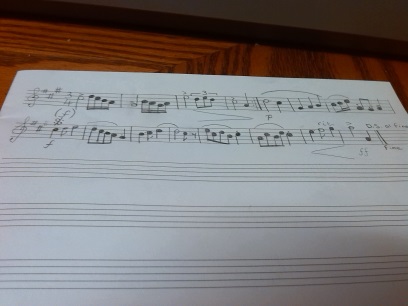
8. Give your masterpiece a name! Try to get it to relate to your piece, for example if it is a ‘sad’ piece, name it something sad, and if it is an ‘exciting’ piece, think of something that reminds you of something excited, and base it on that. This is actually harder than you would think, so use your imagination! My example below isn’t very imaginative or interesting, so see what you can think of!

When all this is done, you have completed your piece. Play it through again to see what it sounds like with all the details included, and make any last-minute changes that you need. Why not play it for your family and friends? Who knows, you could be the next Bach!
Still haivng trouble finding inspiration – have a look at these great quotes from famous people who love music too:
“Music touches us emotionally, where words alone can’t.” – Johnny Depp
“It’s easy to play any musical instrument: all you have to do is touch the right key at the right time and the instrument will play itself.” – Johann Sebastian Bach
“Where words fail, music speaks.” – Hans Christian Andersen
Thanks for reading our Ballymena Today guide to writing sheet music.

